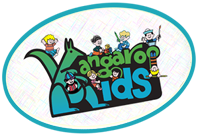Web Md helps busy Moms with these shopping tips:
Moms today are busy, whether they work in or outside the home (or both). But that doesn’t mean that they don’t care about feeding their families in the healthiest way possible.
The simplest tip to help your family get more of the nutrients they need — and fewer nutrients that contribute to disease and weight gain — is to serve more whole foods and less processed food. Eat fruits and vegetables with every meal. Serve your children healthy, lean protein at most meals.
Because it all starts with what goes into the shopping cart, here are some simple “healthy eating” shopping strategies for busy moms.
What Food to Put in Your Shopping Cart
Here’s a list of nutrients that are important for child nutrition and may be deficient in the daily diets of some American children.
Buy Fiber-Filled Foods for Your Child
Fiber promotes digestive health, reduces the risk of coronary heart disease, and assists in keeping blood sugar levels normal. Fiber may also help children maintain a healthy weight because it fills you up on fewer calories.
Fiber is found in plant foods, pure and simple. Follow these foods and you’ll find all the fiber:
• Vegetables (fresh, frozen, and canned)
• Fruits (fresh, frozen, and canned)
• Beans (dried, canned)
• Edamame (fresh or frozen)
• Nuts and seeds
• Whole grain cereal (hot and cold)
• 100% whole wheat or whole grain bread products
• Whole grain blend pastas
• Whole grain crackers
• Whole wheat tortillas
Pick Up Potassium Power
Potassium is one of the minerals that children today tend not to get enough of, according to recent studies. Potassium works as an electrolyte in the body, helping maintain a healthy balance of water in the blood and body tissues. Potassium also assists in nervous system and muscle function.
Good sources of potassium in the produce section include:
• Artichoke
• Avocado
• Bananas
• Cantaloupe
• Leafy green vegetables (such as beet greens, Swiss chard, broccoli)
• Orange juice
• Prunes and prune juice
• Papaya
• Potatoes with skin
• Tomatoes
Other foods with a lot of potassium include:
• Beans and peas, including lima beans
• Fish, shellfish, and clams
• Low-fat and fat-free dairy
• Nuts (including almonds, brazil nuts, peanuts, soy nuts, and pistachios)
Look for Healthy Protein and Amino Acids
Healthy protein should be included in almost every meal your children eat. The amino acids within protein serve as the building blocks for our body’s cells, according to a report by the Institute of Medicine.
Good sources of protein are animal products and soybeans, which contain all nine amino acids that your body can’t make on its own:
• Eggs
• Reduced-fat cheese
• Fish
• Lean meat
• Skinless poultry
• Low-fat milk
• Soybeans and soybean products
• Yogurt
Plant protein sources tend to be deficient in one or more of the essential amino acids. But if you eat the plant proteins on the same day, they complement each other to become complete proteins in your body.
• Beans
• Nuts and seeds
• Vegetables
• Whole grains
Be sure your children eat omega-3 fatty acids and monounsaturated fats. Omega-3 fatty acids are particularly important for infants and young children because they help neurological development and growth, according to the Institute of Medicine. Monounsaturated fats improve insulin sensitivity and help reduce the risk of heart disease and high blood pressure.
These foods are excellent sources of omega-3s or monounsaturated fat:
• Fatty fish such as salmon, tuna, herring, mackerel, anchovies
• Eggs with omega-3
• Nuts
• Seeds
• Olive oil
• Canola oil
• Ground flaxseed
• Products that use liquid olive oil or canola oil (certain margarines, salad dressings, bottled or prepared sauces, and baked goods, for example)





